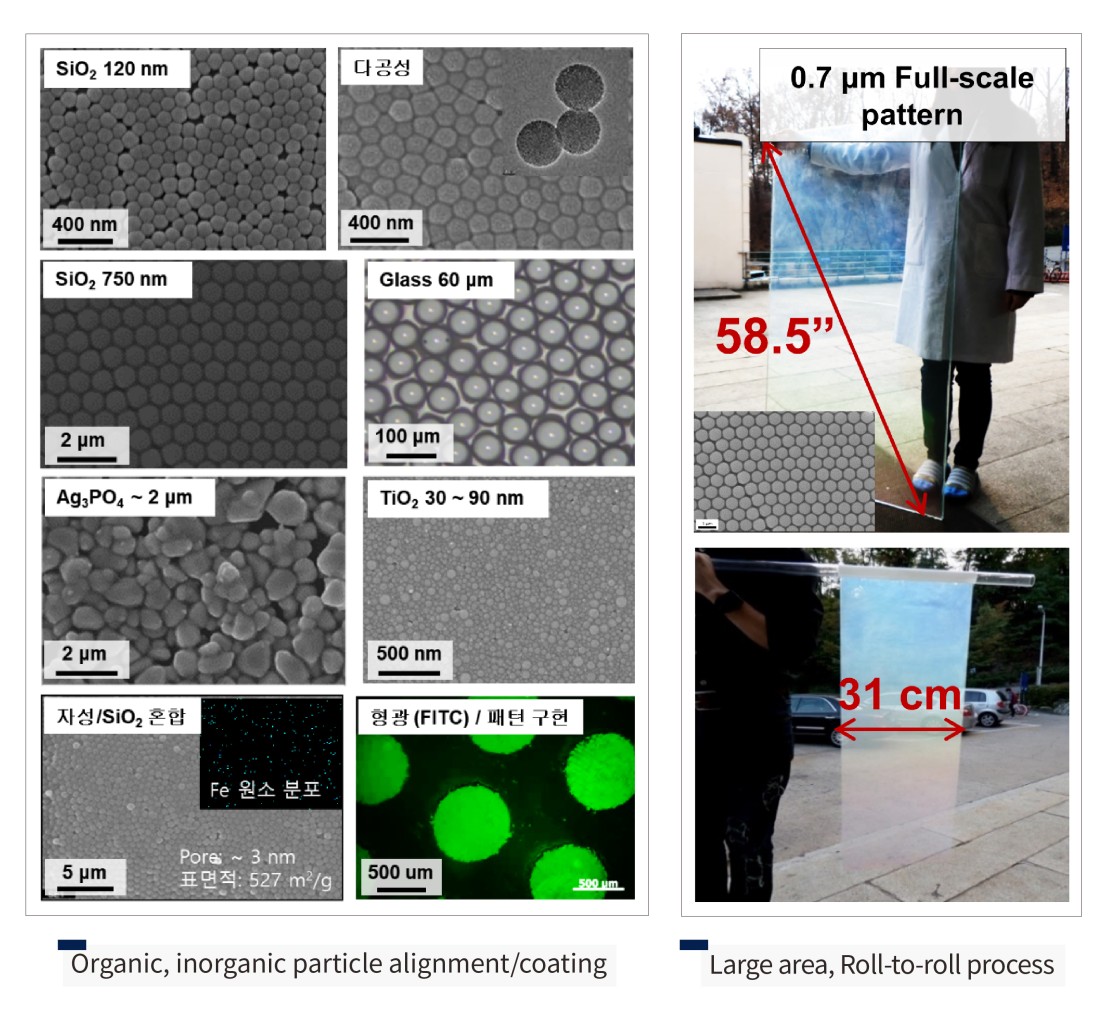Core Technology
Particle Array System
Conventional methods for fabrication of a single-layer array containing particles of sub-micron sizes on substrates, such as self-assembly or spin coating via sol-gel process or using suspended particles in liquids, have some limitations for industrial application.
We had therefore devised a platform technology to arrange functional particles of various sizes, ranging from a few tens of nanometers to a few hundred microns, into single-layer arrays on substrates by a simple and continuous process under atmospheric pressure. This platform allows the fabrication of arrayed film on an industrial scale in terms of film area and production speed.
The Particle Array System, PAS, is unique in that it has almost no limit on the size, shape, material of the employed particles, and substrates. Thus, customized particle-array films for surface modification, area patterning, or particle transfer on any substrate is possible.
The fabrication of customized test sockets and bonding film for micro/mini-LED are typical examples of allocation of the PAS. Our micro-LED test socket can test more than 250,000 chips on a wafer at one time through the electro-luminescence method. (pitch 50㎛*50㎛, socket size 25mm*25mm)
Fabrication
For fabrication of the arrayed layer of sub-micron level particles on substrate, the most common methods such as self-assembly technique or spin coating from sol-gel process or from suspended particles in liquid have some limitation to produce the layer or films in industry scale.
Our platform technology can manufacture fine patterned molds of 1um class using a photomask. Manufactured molds are used repeatedly to produce 1:1 corresponding fine pattern films.
-
Particle Array System
youtube.com
Intellectual Properties
This core technology has been patented in a total of 10 countries, both in Korea and abroad, and a wide patent portfolio has been established by improving the original technology to secure dozens of patents. Based on world-recognized particle alignment technology, we are conducting state-of-the-art research necessary for future bio and electronic materials




